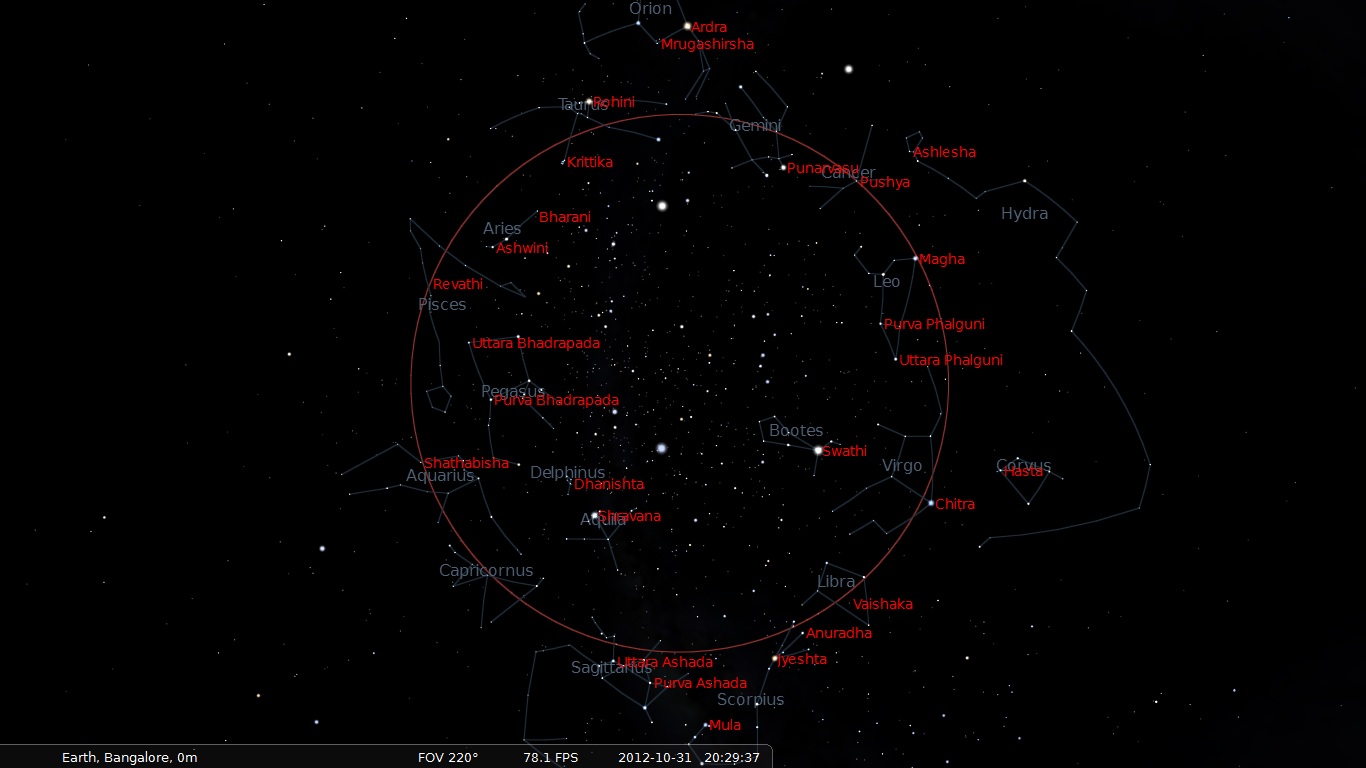|
Ashlesha (nakshatra)
Ashlesha (Sanskrit: आश्लेषा or ''Āśleṣā'') (Tibetan: སྐར་མ་སྐག), also known as Ayilyam in Tamil and Malayalam (Tamil: ஆயில்யம், Malayalam: ആയില്യം, ''Āyilyaṃ''), is the 9th of the 27 nakshatras in Hindu astrology. Ashlesha is also known as the Clinging Star or Nāga. It corresponds to part of the constellation Hydra, including the star Epsilon Hydrae which has been named Ashlesha. It extends from 16:40 to 30:00 Cancer. The planetary lord is Mercury or Budha. Its presiding deities are the Nāgas. The nakshatra's symbol is a coiled serpent. It is a ''trikshna'' or sharp nakshatra. Its animal symbol is the male cat. See also *List of Nakshatras In Indian astronomy, Ancient Indian astronomy, there are 27 ''nakshatras'' , or sectors along the ecliptic. A list of them is first found in the ''Vedanga Jyotisha'', a text dated to the final centuries BCE. The ''Nakṣatra'' system predates the i ... References ... [...More Info...] [...Related Items...] OR: [Wikipedia] [Google] [Baidu] |
Tamil Language
Tamil (, , , also written as ''Tamizhil'' according to linguistic pronunciation) is a Dravidian language natively spoken by the Tamil people of South Asia. It is one of the longest-surviving classical languages in the world,. "Tamil is one of the two longest-surviving classical languages in India" (p. 7). attested since 300 BC, 300 BCE.: "...the most acceptable periodisation which has so far been suggested for the development of Tamil writing seems to me to be that of A Chidambaranatha Chettiar (1907–1967): 1. Sangam Literature – 200BC to AD 200; 2. Post Sangam literature – AD 200 – AD 600; 3. Early Medieval literature – AD 600 to AD 1200; 4. Later Medieval literature – AD 1200 to AD 1800; 5. Pre-Modern literature – AD 1800 to 1900" at p. 610 Tamil was the lingua franca for early maritime traders in South India, with Tamil inscriptions found outside of the Indian subcontinent, such as Indonesia, Thailand, and Egypt. The language has a well-documented history wit ... [...More Info...] [...Related Items...] OR: [Wikipedia] [Google] [Baidu] |
Malayalam
Malayalam (; , ) is a Dravidian languages, Dravidian language spoken in the Indian state of Kerala and the union territories of Lakshadweep and Puducherry (union territory), Puducherry (Mahé district) by the Malayali people. It is one of 22 Languages with official status in India, scheduled languages of India. Malayalam was designated a "Classical Languages of India, Classical Language of India" in 2013. Malayalam has official language status in Kerala, Lakshadweep and Puducherry (Mahé, Puducherry, Mahé), and is also the primary spoken language of Lakshadweep. Malayalam is spoken by 35.6 million people in India. Malayalam is also spoken by linguistic minorities in the neighbouring states; with a significant number of speakers in the Kodagu and Dakshina Kannada districts of Karnataka, and Kanyakumari district, Kanyakumari, Coimbatore district, Coimbatore and Nilgiris district, Nilgiris district of Tamil Nadu. It is also spoken by the Malayali diaspora, Malayali Diaspora wo ... [...More Info...] [...Related Items...] OR: [Wikipedia] [Google] [Baidu] |
Nakshatra
Nakshatra () is the term for Lunar mansion in Hindu astrology and Buddhist astrology. A nakshatra is one of 27 (sometimes also 28) sectors along the ecliptic. Their names are related to a prominent star or asterisms in or near the respective sectors. In essence (in Western astronomical terms), a nakshatra simply is a constellation. Every nakshatra is divided into four ''padas'' ( "steps"). The starting point for the nakshatras according to the ''Vedas'' is "Krittika" (it has been argued, because the Pleiades may have started the year at the time the ''Vedas'' were compiled, presumably at the vernal equinox), but, in more recent compilations, the start of the nakshatras list is the point on the ecliptic directly opposite the star Spica, called ''Chitrā'' in Sanskrit. This translates to Ashwinī, a part of the modern constellation of Aries. These compilations, therefore, may have been compiled during the centuries when the sun was passing through Aries at the time of the ver ... [...More Info...] [...Related Items...] OR: [Wikipedia] [Google] [Baidu] |
Nāga
In various Asian religious traditions, the Nāgas () are a divine, or semi-divine, race of half-human, half-serpent beings that reside in the netherworld (Patala), and can occasionally take human or part-human form, or are so depicted in art. Furthermore, nāgas are also known as Dragon, dragons and Water spirit, water spirits. A female nāga is called a Nagin, or a Naiṇī Devī, Nagini. According to legend, they are the children of the sage Kashyapa and Kadru. Rituals devoted to these supernatural beings have been taking place throughout South Asia for at least 2,000 years. They are principally depicted in three forms: as entirely human with snakes on the heads and necks, as common serpents, or as half-human, half-snake beings in Hinduism and Buddhism. ''Nagaraja'' is the title given to the king of the nāgas. Narratives of these beings hold cultural significance in the mythological traditions of many South Asian and Southeast Asian cultures, and within Hinduism and Buddhism ... [...More Info...] [...Related Items...] OR: [Wikipedia] [Google] [Baidu] |
Hydra (constellation)
Hydra is the largest of the 88 modern constellations, measuring 1303 square degrees, and also the longest at over 100 degrees. Its southern end borders Libra (constellation), Libra and Centaurus (constellation), Centaurus and its northern end borders Cancer (constellation), Cancer. It was included among the 48 constellations listed by the 2nd century astronomer Ptolemy. Commonly represented as a water snake (other), water snake, it straddles the celestial equator. History and mythology Western mythology The Greek constellation of Hydra is an adaptation of a Babylonian astronomy, Babylonian constellation: the MUL.APIN includes a "serpent" constellation (MUL.DINGIR.MUŠ) that loosely corresponds to Hydra. It is one of two Babylonian "serpent" constellations (the other being the origin of the Greek Serpens), a mythological hybrid of serpent, lion and bird. The shape of Hydra resembles a twisting snake, and features as such in some Greek myths. One myth associates it w ... [...More Info...] [...Related Items...] OR: [Wikipedia] [Google] [Baidu] |
Epsilon Hydrae
Epsilon Hydrae (ε Hydrae, abbreviated Epsilon Hya, ε Hya) is a multiple star system of a combined third magnitude in the constellation of Hydra. Based upon parallax measurements obtained during the Hipparcos mission, it is located roughly distant from the Sun. The system consists of a binary pair designated Epsilon Hydrae AB, whose two components are themselves designated Epsilon Hydrae A (formally named Ashlesha ) and B, orbited by a spectroscopic binary designated Epsilon Hydrae C. A possible fourth component, designated Epsilon Hydrae D, shares a common proper motion with the other components and thus is most likely a gravitationally-bound member of the system. Nomenclature ''ε Hydrae'' ( Latinised to ''Epsilon Hydrae'') is the system's Bayer designation. The designations of the three constituents as ''Epsilon Hydrae AB'', ''C'' and ''D'', and those of ''AB's'' components - ''Epsilon Hydrae A'' and ''B'' - derive from the convention used by the Washington ... [...More Info...] [...Related Items...] OR: [Wikipedia] [Google] [Baidu] |
Cancer (constellation)
Cancer is one of the twelve constellations of the zodiac and is located in the Northern celestial hemisphere. Its name is Latin for crab and it is commonly represented as one. Cancer is a medium-size constellation with an area of 506 square degrees and its stars are rather faint, its brightest star Beta Cancri having an apparent magnitude of 3.5. It contains ten stars with known exoplanet, planets, including 55 Cancri, which has five: one Super-Earth, super-Earth and four gas giants, one of which is in the habitable zone and as such has expected temperatures similar to Earth. At the (angular) heart of this sector of our celestial sphere is Beehive Cluster, Praesepe (Messier 44), one of the closest open clusters to Earth and a popular target for amateur astronomers. Characteristics Cancer is a medium-sized constellation that is bordered by Gemini (constellation), Gemini to the west, Lynx (constellation), Lynx to the north, Leo Minor to the northeast, Leo (constellation), Leo to t ... [...More Info...] [...Related Items...] OR: [Wikipedia] [Google] [Baidu] |
Mercury (astrology)
In astrology, planets have a meaning different from the astronomical understanding of definition of planet, what a planet is. Before the scientific revolution, age of telescopes, the night sky was thought to consist of two similar components: fixed stars, which remained motionless in relation to each other, and moving objects/"Classical planet, wandering stars" (), which moved relative to the fixed stars over the course of the year(s). To the Ancient Greeks who learned from the Babylonians, the earliest astronomers/astrologers, this group consisted of the five planets visible to the naked eye and excluded Earth, plus the Sun and Moon. Although the Greek term ''planet'' applied mostly to the five 'wandering stars', the ancients included the Sun and Moon as the ''Sacred 7 Luminaires/7 Heavens'' (sometimes referred to as "Lights",) making a total of 7 planets. The ancient Babylonians, Greeks, Persians, Romans, Medieval Christians, and others thought of the 7 Classical Planets, class ... [...More Info...] [...Related Items...] OR: [Wikipedia] [Google] [Baidu] |
Budha
Budha () is the Sanskrit word for the planet Mercury (planet), Mercury, personified as a god. Also a god who represented the intelligence. He is also known as Somaya, Rohinaya, and rules over the nakshatra, ''nakshatra''s (lunar mansions) of Ashlesha (nakshatra), Ashlesha, Jyeshtha (nakshatra), Jyeshtha, and Revati (nakshatra), Revati. Planet Budha is the planet that appears in various Hindu astronomical texts in Sanskrit, such as the 5th century CE ''Aryabhatiya'' by Aryabhatta, the 6th century CE ''Romaka'' by Latadeva and ''Panca Siddhantika'' by Varahamihira, the 7th century CE ''Khandakhadyaka'' by Brahmagupta, and the 8th century CE ''Sisyadhivrddida'' by Lalla. These texts present Budha as one of the planets and find the characteristics of the respective planetary motions. Other texts such as ''Surya Siddhanta'' dated to have been complete sometime between the 5th century CE and 10th century CE present their chapters on various planets with the mythologies of t ... [...More Info...] [...Related Items...] OR: [Wikipedia] [Google] [Baidu] |
List Of Nakshatras
In Indian astronomy, Ancient Indian astronomy, there are 27 ''nakshatras'' , or sectors along the ecliptic. A list of them is first found in the ''Vedanga Jyotisha'', a text dated to the final centuries BCE. The ''Nakṣatra'' system predates the influence of Hellenistic astronomy on Vedic tradition, which became prevalent from about the 2nd century CE. There are various systems of enumerating the ''Nakṣatra''-s; although there are 27–28 days to a sidereal month, by custom only 27 days are used. The following list gives the corresponding regions of sky. Months in the modern Indian national calendar—despite still carrying names that derive from the nakshatras—do not signify any material correlation. It stands to reason that during the original naming of these months—whenever that happened—they were indeed based on the nakshatras that coincided with them in some manner. The modern Indian national calendar is a solar calendar, much like the Gregorian calendar wherein solstic ... [...More Info...] [...Related Items...] OR: [Wikipedia] [Google] [Baidu] |







